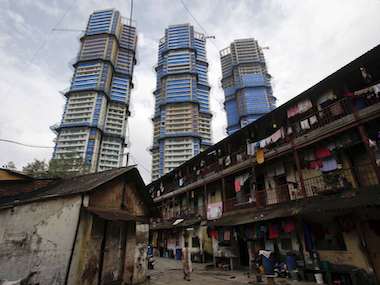The year started with a bang and ended with less than a whimper. That is true for the Indian economy as well as for the real estate business in India.
Let’s look at Mumbai first, which includes the suburbs and Thane and is jointly called Mumbai Metropolitan Region (MMR). The total number of units launched in 2010 stood at 55,000, which came down to just about 19,000 in 2011. In the NCR region as well, around 2 lakh units were launched in 2010. And in 2011, it came down to just about 78,000 units (1 unit equals to 100 flats with price of Rs 30,00,000 or above). If one looks as the performance of new projects, 36 percent of the new launches were unsold in 2010, a percentage that went up to 56 percent in Mumbai this year.
So what went wrong? The cost of buying a flat is the major concern. On one hand, prices have risen sharply after a slowdown in 2008-09. For example, realty prices on an average have almost doubled in 2 years and touched an all time high of Rs 10,021 per square feet in September 2011. On the other interest rates were also hiked time and again. The cost of buying a flat kept rising through the year leaving little appetite for properties.
What’s worse? Commercial real estate is as bad as residential properties. As Samantak Das, India research head, Knight Frank, a real estate firm explains to Firstpost, “Commercial real estate demand is mainly driven by IT companies, banks and financial services companies. Now with the global slowdown the IT companies are having a tough time. So there is no demand for commercial real estate as well.” This means the revival of demand for commercial real estate will also take time. Das says demand for commercial and residential real estate cannot improve in the first half of 2012. Only when there is a clear signal that interest rates are heading southward and there is some stability in the economy, will demand improve.
[caption id=“attachment_162652” align=“alignleft” width=“380” caption=“The cost of buying a flat kept rising through the year leaving little appetite for properties. Reuters”]
 [/caption]
[/caption]
Pankaj Kapoor, managing director, Liases Foras, a firm that researches real estate trends in India, is not so sure. He says commercial real estate will take at least three to four years to improve as there is too much over-supply and global economic issues might take a long time to get resolved, which will impact demand from IT companies.
However, one thing both agree upon is there is no significant price correction in the offing. Das says housing is crucial and there is lot of pent up demand in the market. As interest rates fall, demand will automatically pick up, but there might not be any significant rise in prices. Even Kapoor agrees that price correction will not occur though prices could stabilize for the next couple of years. Factoring in inflation,would automatically mean a correction in real prices.
In terms of regional pockets, bigger cities will continue to do well. Prices have not gone up too much in cities like Kolkata and Chennai as these are consumer-driven, stable markets. But Mumbai, Delhi, Bangalore and Hyderabad have seen prices rise and will continue to get demand. Tier II and III cities have yet to see the demand that everyone has been talking about. Kapoor says, many developers have parcels of land in these cities and have been trying to talk up the demand, but the effect is not visible. In smaller towns land is not scarce and the culture of apartments is therefore absent. It is not an organised real estate market. People build their own homes and the exact demand cannot always be captured.
2012 may not be an year of great demand and revival of the real estate sector, but could help in changing the way in which people look at the sector.
The Real Estate Regulation Bill, which will be tabled in Parliament next year and will pave the way for a watchdog for the sector, will be a welcome move. It could look into issues of arbitrary pricing and corruption in the sector, which would have positive impact in the long run. It might take a couple of years, but 2012 may well be the beginning of building a real estate market for consumers and not merely builders and developers.
)